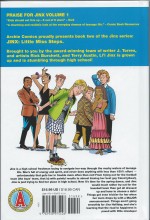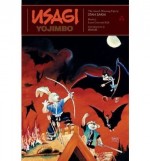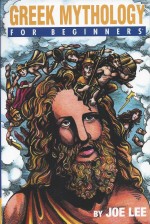

By J. Torres, Rick Burchett & Terry Austin (Archie Comics)
ISBN: 978-1-936975-42-6 (HC)Â Â Â Â Â Â Â Â Â Â Â Â Â Â Â Â Â Â Â : 978-1-936975-41-9 (PB)
For most of us, when we say comicbooks, thoughts either turn to buff men and women in garish tights hitting each other and lobbing trees or cars about, or stark, nihilistic crime, horror or science fiction sagas aimed at an extremely mature and sophisticated readership of already-confirmed fans.
For American comics these days that is indeed the norm. Over the years though (and throughout the rest of the world still), other forms and genres have continued to wax and wane.
However one US company which has held its ground against the tide over the years – supported by a thriving spin-off television and movie franchise – is the teen-comedy powerhouse that created a genre through the exploits of carrot-topped Archie Andrews and the two girls he could never choose between – Betty Cooper and Veronica Lodge.
As decades passed, other companies largely ignored the fact that girls read comics too and, in their frantic, slavish pursuit of the spandex dollar, lost half their potential audience. Girls simply found other ways to amuse themselves until, in the 1990s, the rise of manga painfully proved to comics publishers what Archie Comics had always known.
Ever since that pivotal moment Editors have attempted to recapture that vast missing market: creating worthy titles and imprints dedicated to material for the teen/young adult audience (since not all boys thrive on a steady diet of cosmic punch-ups and vengeful vigilantes) which had embraced translated manga material, momentous comics epics like Maus and Persepolis or the abundant and prolific prose serials which produced such pop phenomena as Twilight, The Hunger Games and Harry Potter.
Archie thrived by never abandoning its female readership and by constant reinvention of its core characters, seamlessly adapting to the changing world outside its bright, flimsy pages: shamelessly co-opting pop music, youth culture and fashion trends into its infallible mix of slapstick and romance.
Each and every social revolution has been painlessly assimilated into the mix (the company has managed to confront a number of major issues affecting the young in a manner both even-handed and tasteful over the years), and the constant addition of timely characters such as African-American Chuck and his girlfriend Nancy, fashion-diva Ginger, Hispanic couple Frankie and Maria and a host of others such as spoiled home-wrecker-in-waiting Cheryl Blossom all contributed to a broad and refreshingly broad-minded scenario.
There are non-sensationalised interracial romances, and in 2010 Archie jumped the final hurdle for a family-entertainment medium with the introduction of Kevin Keller, an openly gay young man and a clear-headed advocate capably tackling and dismantling the last major taboo in mainstream kids comics.
Where once cheap, prolific and ubiquitous, strip magazines in the 21st century are extremely cost-intensive and manufactured for a highly specific – and dwindling – niche market. Moreover the improbably beguiling and bombastic genres that originally fed and nurtured comicbooks are increasingly being supplanted by TV, movies and assorted interactive games media.
Happily, old-school prose publishers and the still-fresh graphic novel industry have a different business model and far more sustainable long-term goals, so the magazine makers’ surrender has been turned into a burgeoning victory, as solid and reassuringly sturdy Comics-as-Books increasingly buck the slowly perishing pamphlet/papers trend.
Publishers like Archie…
Jinx: Little Miss Steps is the second outing for a venerable child-star of the company given a stunning makeover and refit courtesy of a multi award-winning creative team. Writer J. Torres (Teen Titans Go!, Degrassi: the Next Generation, Alison Dare, Days Like This, Lola – a Ghost Story and others) and celebrated artists Rick Burchett & Terry Austin are responsible for turning adorable six-year old tomboy Li’l Jinx into a genuine icon of, if not role-model for, modern teenaged girls in a style and manner at once astonishingly accessible and classically captivating.
You might be familiar with the precocious and feisty Li’l Jinx who debuted in Pep Comics #62 (cover-dated July 1962). Created by Joe Edwards, she debuted as the publisher began dropping superheroes such as the Shield and Black Hood to specialise in kid-friendly humour features. Over the next few decades she appeared in her own title, as well as Li’l Jinx Giant Laugh-Out and assorted anthologies such as Pep and Archie Giant Series Magazine.
Like Edwards’ own son, her birthday was on Halloween, and the writer/artist put much of himself into the strip. A boisterous, basically decent, sports-loving, mischievous tyke (in the manner of our Minnie the Minx), when not romping, cavorting and tussling with other kids such as Gigi, Greg, Charley Hawse, Russ, Roz and Mort the Worry Wart, Jinx almost exclusively interacted with her long-suffering dad Hap Holliday. Her mother was seldom seen…
She faded away gradually during the 1980s as teenagers and Turtles supplanted younger characters in Archie’s stable.
She was revived and given a thorough 21st century upgrade for a new serial in Life With Archie (beginning in #7, March 2011) a growing girl just starting high school. She hadn’t lost all her rough edges though…
After a handy ‘Cast of Jinx’ page, this superb sequel – available in both paperback and hardcover editions – opens with the stroppy lass freaking out because she’s going to be late for a meeting with her mother. Jinx has lived with her dad ever since her parents divorced and almost never sees Mery Holliday anymore…
A busy ER nurse, Mery disappoints her daughter again at the last minute so, after fruitlessly reaching out to her already booked and busy friends, the frustrated Jinx settles in to watch an old movie with dear old Dad…
She’s still fuming at Rose Valley High on Monday, and when the gang start talking about baseball tryouts she goes ballistic at the injustice of the fact that girls aren’t allowed to audition. In high school only boys play B-ball. Girls have to play Softball…
Already in trouble with Coach Boone for trying to join the all-male Football squad, Jinx’s day is further spoiled when the sports master pre-emptively warns her not to cause any further disruption. The guys don’t get it: sure, she’s better at sports than any of them, but that’s the rules.
Anyway, her mother was a Softball superstar in her day, so why shouldn’t she be content to be the same?
Later, when her mother again cancels at the last moment Jinx blows her top…
Her female friends don’t really understand either and Dad is baffled when his despondent daughter just seems to give up. It takes a bizarre pep-talk from shallow fashion-plate frenemy Gigi to bring Jinx out of her funk and, after a confrontation with Boone that she could never have predicted, Jinx gets her shot at joining the Baseball squad…
Gigi and Roz are pursuing more traditional roles, joining the committee to organise the Freshman Dance, but their attempts to socialise and civilise Jinx end in bloodshed and embarrassment. There’s even more such in store as the recovering tom-boy becomes increasingly aware that her old sandlot pals Greg and Charley are starting to think of her as something other than the one who beats them at every game and sport…
Gigi of course is delighted: there’s never enough teasing and bitchiness to test her verbal venom and well-manicured claws on…
At the Baseball tryout things go very badly. When Jinx loses it and beats up Charley, she not only falls foul of viperish Principal Vernon, but worse yet, her mother is there to publicly shame her in front of everybody…
Dad is more understanding but knows there are traumas and repercussions still to come. Although the infuriated Jinx refuses to take her mother’s calls she cannot avoid Mery when the entire family is called into Vernon’s office. Afterwards mother and daughter reconcile and make yet another date to spend time together. Later Dad confides that one reason his ex-wife has been constantly postponing seeing Jinx is that Mery has a big announcement she’s afraid to make…
He won’t however tell his irksome, impatient child what it is.
Gigi has some disquieting ideas about what such a personal parent-related revelation might be, but the glamour girl’s attention is focussed on her latest party idea – making the upcoming school soiree a Sadie Hawkins Dance. That, she gleefully explains, is where the usual system is reversed and the girls have to invite the boys…
It’s just one more thing to aggravate and annoy the surly tomboy as both Greg and Charley unsubtly start pestering her to pick one of them. With the lads making complete idiots of themselves Jinx dodges the hot potato by inviting an unsuspecting rank outsider, but still has to cope with the breathtaking bombshell her mother drops when she finally turns up for their family day…
With Greg and Charley in ridiculous macho overdrive Jinx starts to wonder if there’s something wrong with her. After all she’s great at sports, hates girly things like fashion and make-up, loathes dresses and can’t wear anything but sneakers.
Putting all that together with hating boys, and Jinx has to wonder if perhaps she’s gay but really doesn’t know it yet…
Clever, witty and intoxicatingly engaging, Jinx is a superb example of what can be accomplished in comics if you’re prepared to portray modern kids on their terms and address their issues and concerns. Without ever resorting to tired soap opera melodrama or angst-ridden teen clichés, Torres has delivered a believable cast of young friends who aren’t stupid or selfish, but simply finding their own tentative ways to maturity. The art by Burchett and Austin is semi-realistic and shockingly effective.
Compellingly funny, gently heart-warming and deftly understated, this is book that will certainly resonate with kids and parents, offering genuine human interactions rather than manufactured atom-powered fistfights to hold your attention. It especially gives women a solid reason to give comics another try.
As added extras this tome also includes a host of bonus features such as background on Joe Edwards’ classic strip: comparing the teen ‘Jinx’ with ‘Li’l Jinx’, as well as the changing faces of ‘Dad’, ‘Jinx, Charley & Greg’ and ‘Jinx and her Mother’.
For aspiring creators there are also a few secrets shared as ‘The Concept of Mery’, ‘The Concept of Mari’ and ‘Behind the Scenes with Jinx Covers’ provides artistic grist for anybody inspired enough to make their own stories.
Sheer exuberant fun; perfectly crafted and utterly irresistible.
© 2013 Archie Comics Publications, Inc. All rights reserved.















